A Trio of Deliciously Distinctive Chilean Olive Oils from the Country’s Premier Artisanal Producer Perfect for Your Summer Table
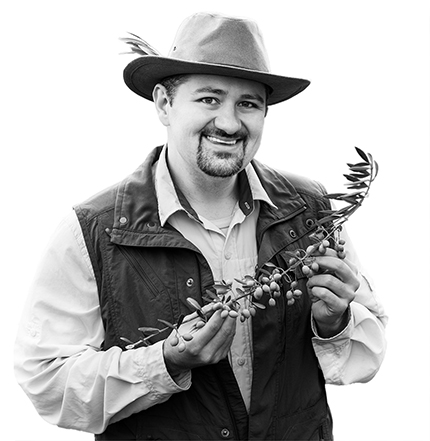
- Each olive oil in this collection is a custom blend of outstanding varietals and unique in its own way.
- Created to enhance summer’s bounty, these oils will elevate every one of your seasonal dishes.
- All three were certified by an independent lab to be 100 percent extra virgin olive oil and rushed to the US by jet to preserve their tantalizing flavors and healthful properties.
- These are Club exclusives, available nowhere else.
After dozens of trips to the Southern Hemisphere over nearly two decades, this intrepid traveler remains fascinated with South America and Chile in particular. Whenever I touch down in Santiago, I’m pleasantly reminded that there’s no jet lag from any time zone change, only the curious feeling of having the season I left up north turned upside down.
This year was quite special for your Olive Oil Hunter, because my wife Meghan and I visited Chile twice. A bucket-list vacation, a cruise to the Antarctic Peninsula, took us there in late January, when I witnessed the emergence of olives on tree branches at Agricola Pobeña, the farm of the Alonso family in Chile’s O’Higgins region—I immediately began to think of them as my babies. When I saw them again in May, they were at harvest plumpness. In between the two visits, an unusual series of natural events occurred, and I fretted about them just as any new parent would.
A Literal Firestorm
Only days after we left the olive groves in January, the worst wildfire in Chilean history burned through 18,000 hectares (roughly 70 square miles) of the Valparaiso, Maule, and O’Higgins regions. It’s hard enough to read about a tragedy of this scale as an outsider, but when you have friends who are directly impacted, it’s devastating. While Juanjo Alonso and his team worried about their neighbors and their land, we worried about them.
The wildfire unfolded against the backdrop of the continuing olive oil crisis raging through Europe, the details of which I have shared with you in my two previous Pressing Reports. I knew that Chilean oils were going to be more in demand than ever before because of the shortage in the Old World, due to the decimated 2023–2024 European harvest.
I also knew the cascading effect this would have: many Chilean olive growers would opt for quantity over quality and take measures like using heat and other mass-market extraction techniques to increase production for a quick profit…but not the Alonso family. I was confident that our close relationship and their commitment to creating the finest olive oils in the country would allow me to secure the liquid gold that Club members adore.
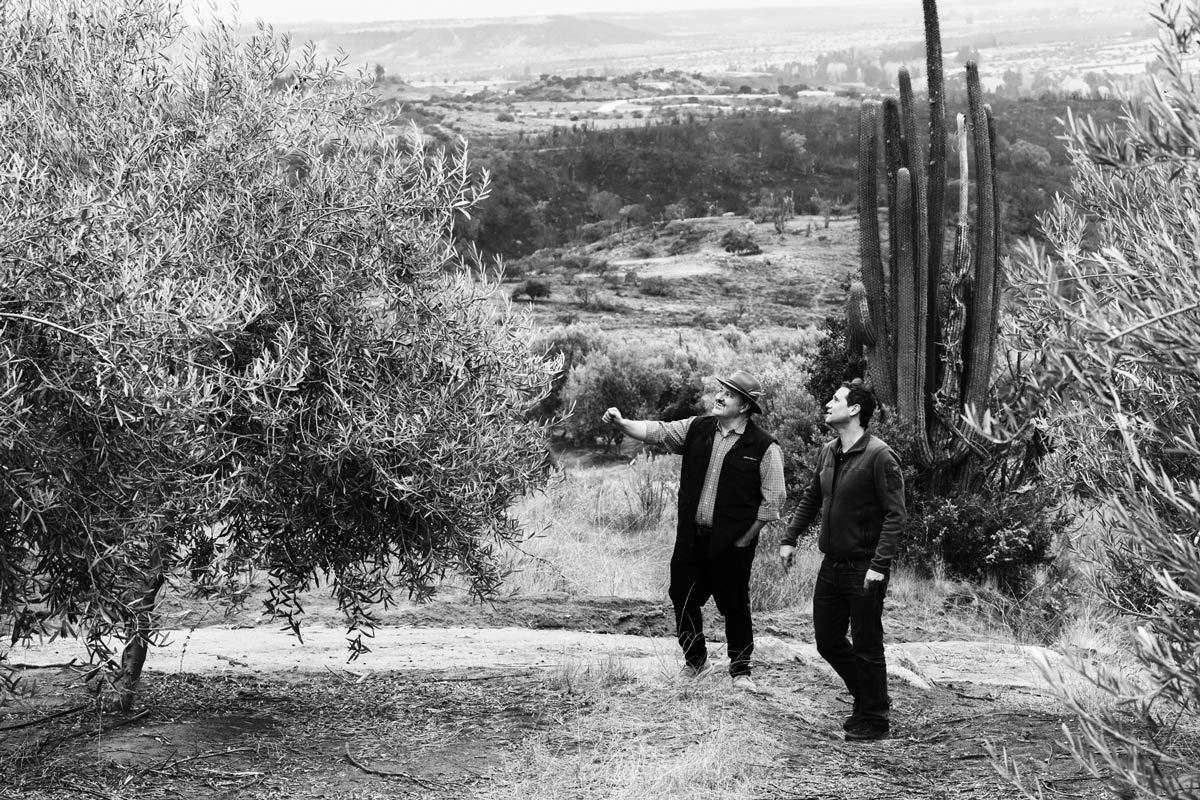
A Step—Many Steps—Above
From day one, more than 15 years ago, Juanjo (short for Juan José) and the team at Agricola Pobeña set their sights on crafting super-premium olive oils. To set themselves apart from other growers, they brought together these essential elements: an expansive farm with numerous microclimates suitable for a very wide selection of olive varietals, top-of-the line equipment, and some of the most skilled agronomists on the planet, led by Juan Carlos Pérez, the man in charge of Agricola Pobeña’s vast acreage. These are the core reasons they’re consistently named one of the top 20 producers in the world by Flos Olei, the bible of extra virgin olive oil.
Just as the wildfire and increasingly peculiar weather patterns would not distract them from their mandate, neither would the global olive oil shortage. And that’s why, for the second year in a row, three oils from Agricola Pobeña’s olives, each oil distinct, are the Club’s Chilean selections. Together, they represent a luscious range of varietals and reflect the meticulous crafting skills of my trusted Merry Band of Tasters, including EVOO authority Duccio Morozzo della Rocca and Chilean experts Juan Carlos Pérez and Denise Langevin. Longstanding Club members know them well, and you can catch up with them in the pages that follow.
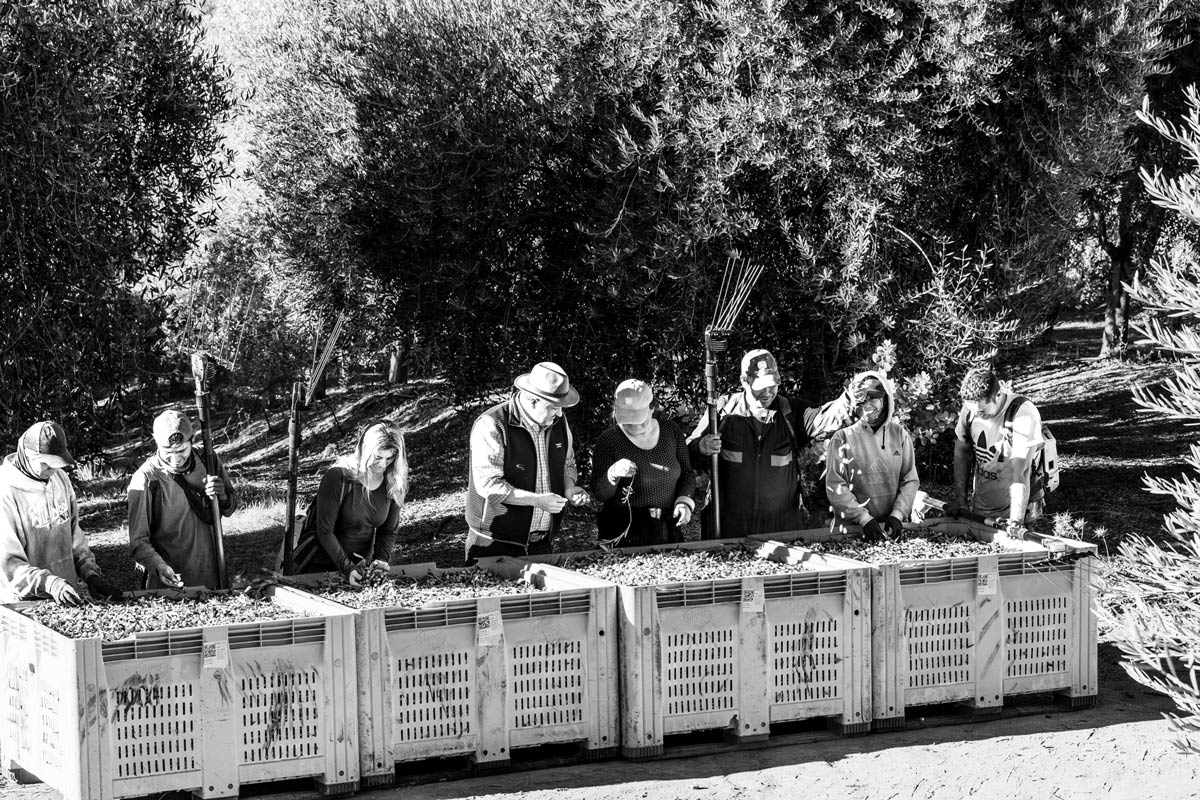
A Food Evolution
In many ways, Agricola Pobeña’s approach to quality mirrors the recent interest in health-conscious eating of many younger Chileans. Thanks to the Alonso family’s two local olive oil stores focused on educating consumers, you can argue that they’ve helped contribute to the dietary changes. “It used to be that if there wasn’t a protein on your plate, it wasn’t a real meal,” Juanjo told me. “Over the last five years, meat has become very expensive, and that helped open people’s minds to the idea that we don’t need to eat meat every day. We can have dishes like ceviche de porotos negros as a main course.” We enjoyed that dish of marinated black beans (it’s in the recipe section, so you, too, can savor it) at Cervecería Rural, a brew pub you’d expect to find in Santiago proper, but which is in the countryside. A lot of young families left the capital during the pandemic and moved to smaller towns, fell in love with them, and decided to stay. This created new opportunities for restaurants of all cuisines. Of course, Santiago itself is now considered an international food capital.
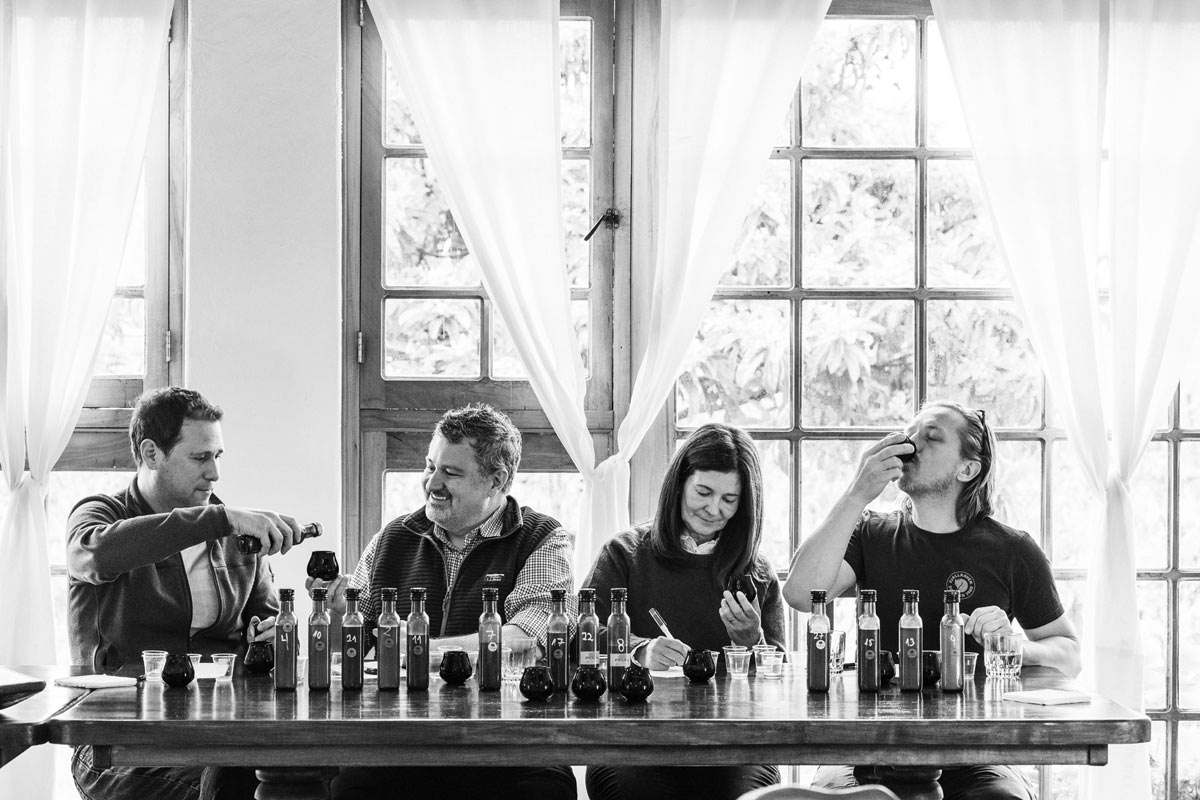
Sushi, increasingly popular thanks to the region’s abundance of seafood, has been elevated to new heights at the restaurant Karai by Mitsuharu in the W Hotel, known for its Peruvian-Japanese fusion cuisine and some of the best nigiri I’ve ever had—chef Mitsuharu Tsumura is consistently ranked as one of the top chefs in Latin America. Fresh markets are getting a new spin of their own. Just outside of Santiago, the Mercado Urbano Tobalaba, known simply as MUT, is a lively mixed-use building that combines culture, cuisine, and sustainability—there are more restaurants than I had meals in which to try them! All my culinary experiences informed both the classic and the innovative dishes offered in this issue’s recipe section, featuring quintessential Chilean ingredients like beans, potatoes, corn, and avocado. I invite you to savor them with family and friends along with this quarter’s oils!
Happy drizzling!

T. J. Robinson
The Olive Oil Hunter®
This Quarter’s First Selection
- Producer: Denise Langevin Exclusive Selection, Agricola Pobeña, Comuna de La Estrella, O’Higgins Region, Chile 2024
- Olive Varieties: Arbequina, Koroneiki
- Flavor Profile: Mild
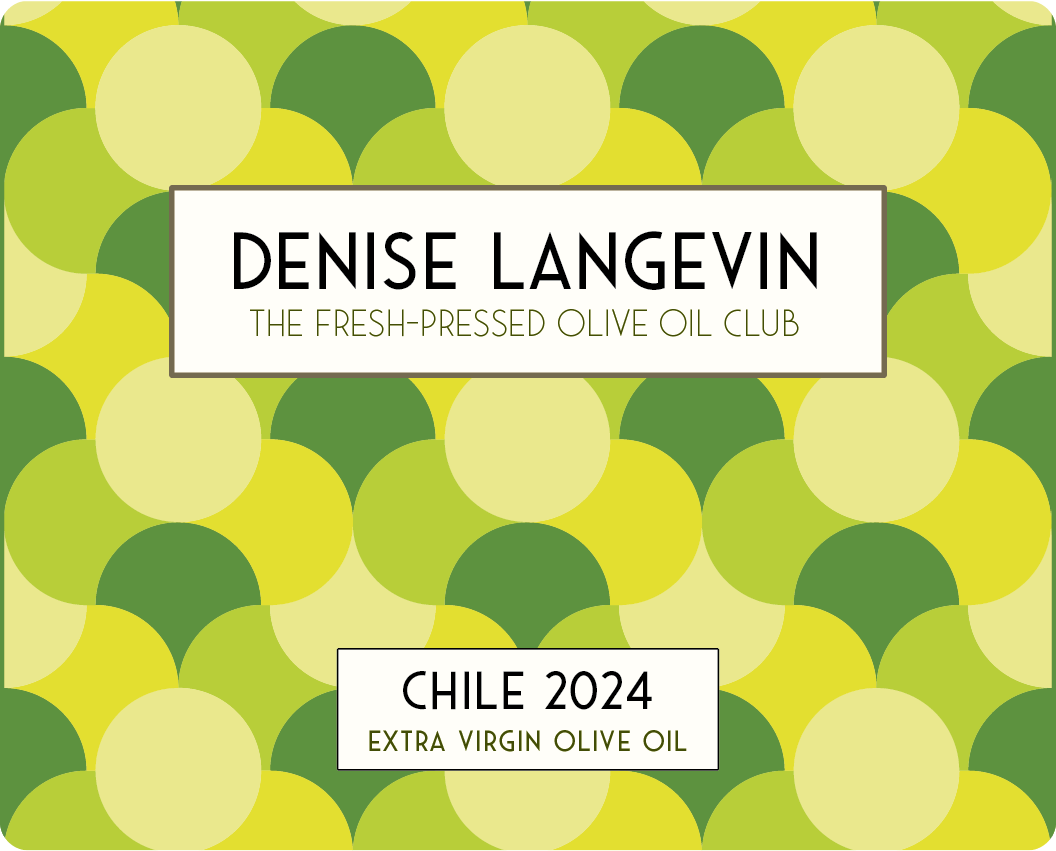
I always look forward to reuniting with Denise Langevin when I’m in Chile. As most Club members know, she’s an acclaimed international olive oil judge—in fact, she had just received 45 samples to grade and score remotely as one of 12 judges of the Monte Carlo Masters Olive Oil International Competition. Her nose and olive oil sensibility are exceptional, and I find her input when crafting Club selections invaluable. Yet I also enjoy simply spending time with her and her husband Luis and immersing myself in the Chilean way of life.
Denise welcomed us into her home on her late grandfather’s farm, where she raises crops. It’s an idyllic setting about an hour south of Santiago, framed by the snow-capped Andes. This is a rich agricultural area, well known for its cherries, which are shipped around the world. Denise had just replanted alfalfa, explaining that it can grow for five years at a stretch, then needs to be pulled so that the soil can have a yearlong rest. We know how painstaking the process of growing olives can be, but the challenge she faced was a surprising one: her latest farm addition, a sheep dubbed Pio Aurelio, had strayed from his grass-maintenance duties and eaten all the leaves from her newly planted, tender olive saplings. A stern reprimand followed, and his fate as a groundskeeper is currently in limbo.
After a trip to the local market for provisions—one of my favorite things to do wherever I travel—we sat down for a fabulous lunch that showcased land and sea. Denise prepared salmon tartare with lemon juice, chives, and avocado on lettuce, while Luis was in charge of a prime rib. The perfectly roasted meat was accompanied by a wonderful assortment of potatoes. There are 4,000 varieties in the Andes region! We feasted on white potatoes roasted with rosemary and olive oil and also on three varieties Denise had recently brought back from a trip to nearby Chiloé Island, each with its own distinctive flavor: a sweet purple one reminiscent of a Peruvian tater; a fat fingerling with a deep earthy flavor; and a sweet one with almost floral notes. With all three of this quarter’s olive oil selections on the dining table, we lavished them on each dish, noting how well they paired with the food.
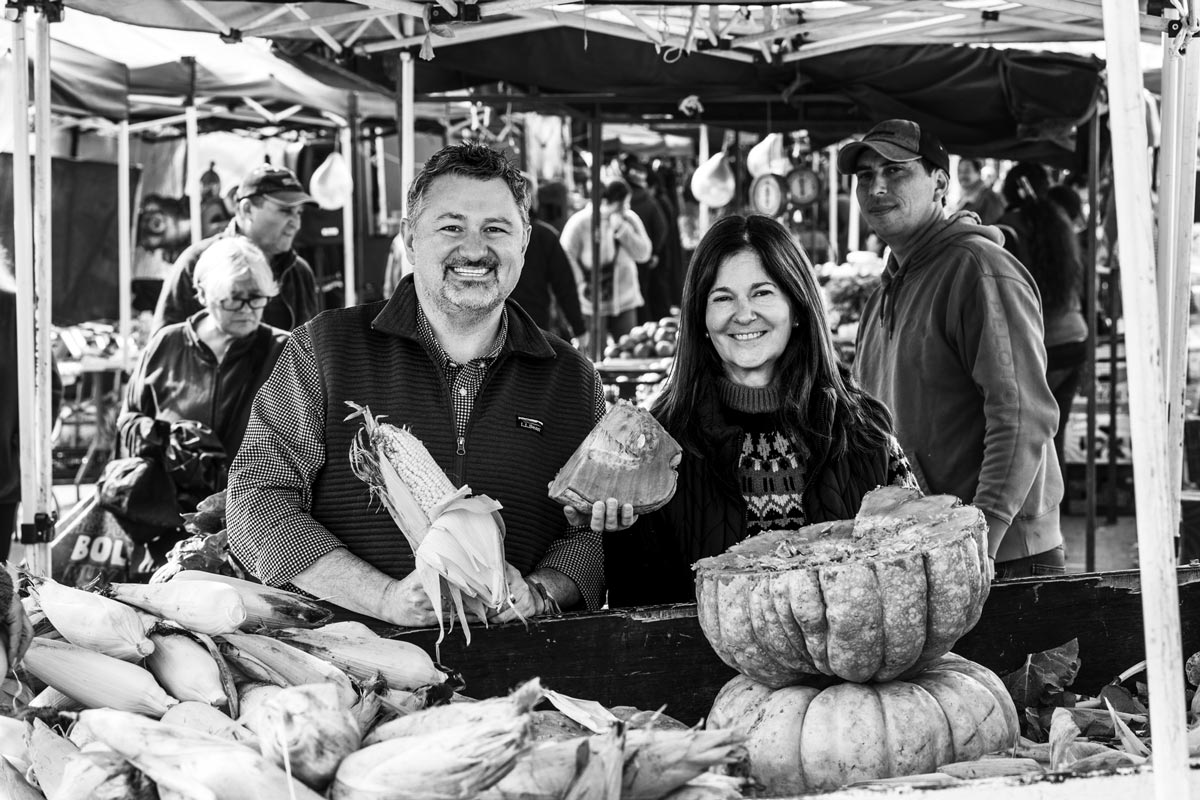
Denise’s love of the earth and sustainable farming led her to expand the educational program she developed for local children from one to two primary schools—she teaches youngsters about healthy farm-to-table eating in a fun way they can understand, like growing their own vegetables in boxes made by Luis and visiting farms to learn about different plants, including a nut farm at harvest time. Plans include taking the kids to an olive mill during next year’s harvest to help them develop an appreciation for making fresh-pressed olive oil. It remains to be seen whether the kids will become as consumed as I am with details like the size of Koroneiki olives (I was delighted that this year’s crop had a much higher pulp-to-pit ratio) or how many Arbequinas must be sampled before the best one can be chosen, but, with Denise guiding them, they’re sure to have an early appreciation for their country’s dazzling olive oils.
This quarter’s mild oil embodies Denise’s personality, a gentle oil from a gentle woman—sweet, generous, and harmonious. It’s 90 percent Arbequina, from different parts of the Agricola Pobeña farm, and 10 percent Koroneiki, which brings out the characteristics of the Arbequina and makes for a beautiful, long finish with a crescendo of flavor. When expert tasters are evaluating olive oils, they often communicate with each other using non-spoken language. This is how I always feel when working with Denise. Duccio summed it up well: “It’s a great experience to taste with Denise—when you work with someone who knows how to taste olive oils, you have a different way of communicating. You share sensations and perceptions—you don’t even need words, the discussion is more telepathic, their expressions, their eyes can tell you so much. The collaboration evolves from seeing each other’s reactions.” I know you’ll be as pleased with the results as I am.
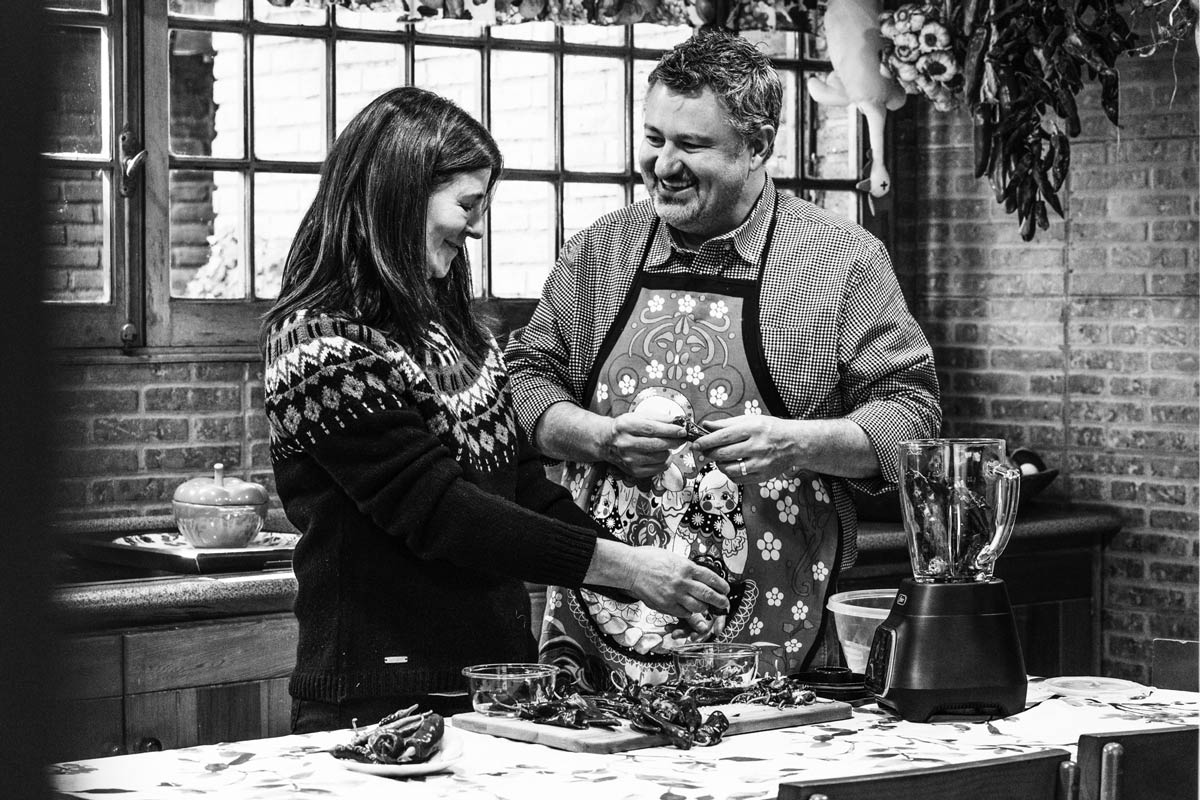
Impressions and Recommended Food Pairings
A deliciously full-flavored mild oil, this is a beautiful expression of Chilean-grown Arbequina and Koroneiki. It embodies the aromas of green grass, banana, Belgian endive, lettuce, walnut, cinnamon, citrus zest, nasturtium, white peppercorns, and fresh mint. On the palate, there’s the nuttiness of walnut, the bitterness of green tea and baby arugula, the sweetness of vanilla, and the lingering spiciness of celery leaf and white pepper.
It will elevate sweet corn gazpacho with avocado crema* and other fresh corn dishes; fruit salads; homemade mayonnaise and aioli; eggs, chicken, and pork; cod and other white fish, shrimp, and lobster; paella and other rice dishes; roasted parmesan carrots and other root vegetables; fruity vinaigrettes; and dulce de leche sundaes and yogurt parfaits.
*See the recipe section for bolded dishes.
This Quarter’s Second Selection
- Producer: El Agrónomo, Agricola Pobeña, Comuna de La Estrella, O’Higgins Region, Chile 2024
- Olive Varieties: Frantoio, Leccino, Coratina, Nocellara del Belice
- Flavor Profile: Medium
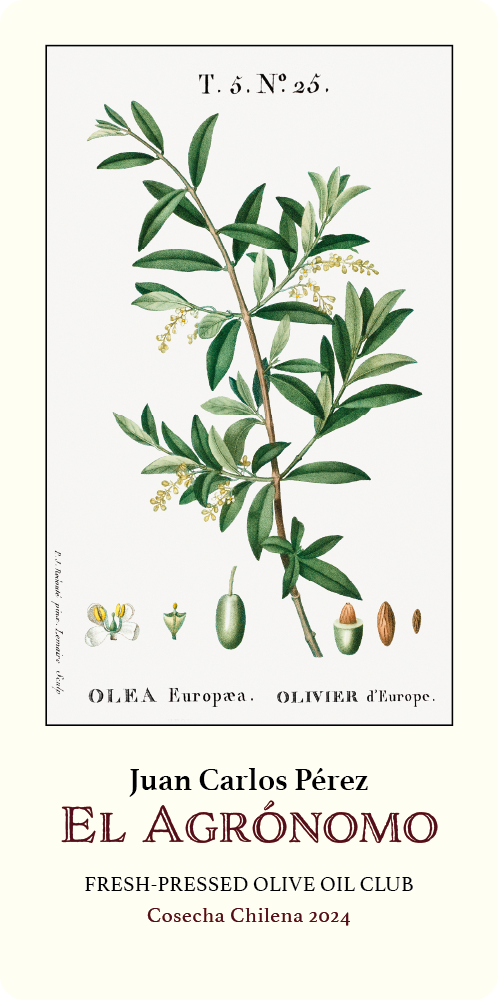
El Agrónomo.” Sounds like the name of a bestseller, a hit movie, or a caped superhero, doesn’t it?
Actually, the latter isn’t far off the mark. This beautiful extra virgin olive oil pays homage to Agricola Pobeña’s heroic agronomist, Juan Carlos Pérez. This is the fourth year in a row we have recognized Juan Carlos’ Marvel-caliber skills with an eponymous oil.
In 2009, the Alonso family closed on the land they purchased near La Estrella to establish a top-tier olive farm. There was so much to be done, as Juanjo Alonso will tell you. One of the first priorities was to hire an agronomist. Now, there’s a long-running joke in Chile that you can’t throw an avocado without hitting an agronomist. What Juanjo didn’t know at the time was that even a weak underhanded pitch over the property’s fenceline could’ve introduced him to one of the most capable and experienced agronomists in Chile. As it was, Juan Carlos (who was literally working on the adjacent farm) made the first move by cold-calling Juanjo. The rest is history. How fortuitous for everyone involved, including us, dear Club member!
Now celebrating his fifteenth year with Agricola Pobeña, Juan Carlos characterizes it as a “successful marriage” and jokes that he’s no longer peeking over fences. Currently, he oversees some 1,100 acres of mixed olive varietals. We imagine he was quite offended when, early in his tenure, a visiting Italian consultant advised diluting all the oils, regardless of variety, to mute and homogenize their flavors for the mass market. (Juanjo told me this story.) Imagine! That would be like seasoning your food with five jars of spice, all of them containing the same flavorless thing. Anyway, Agricola Pobeña’s very distinctive oils were defiantly entered that year into a competition where they won awards. The first of many, I might add. Including inclusion in Flos Olei’s prestigious top 20.
Juan Carlos is justifiably proud of the amazing range of flavors he has been able to extract from the trees by capitalizing on the farm’s many microclimates. (This is how I can select for you three unique oils from the same property. The combinations and permutations are nearly endless.) But the pressure is on, year after year. “Show me the fruit!” succinctly summarizes Juan Carlos’ job. Because only with outstanding olive fruit can you make outstanding olive oils.
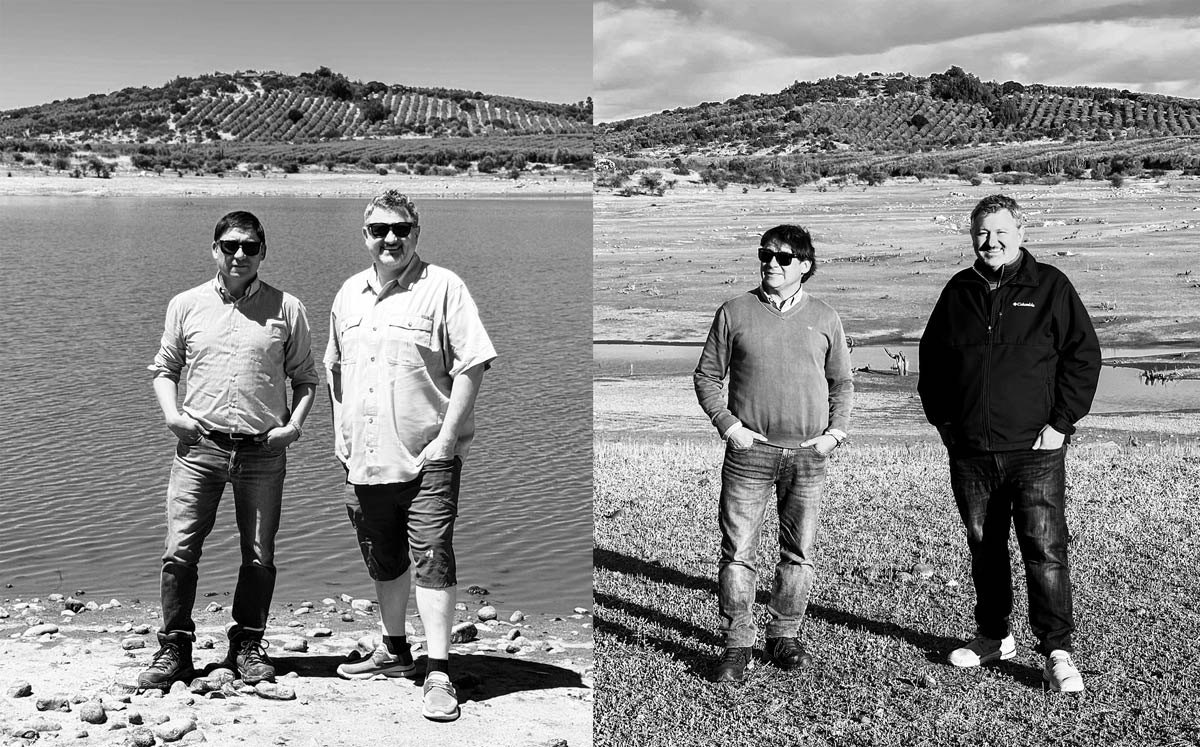
This year was peculiar for a number of reasons. Fortunately, the stranglehold of the “megadrought” that’s been plaguing Chile for more than a decade appears to have been broken. (Fingers crossed.) The lake, which holds the equivalent of 400 Olympic-size swimming pools, was replenished by Mother Nature. This gave Juan Carlos water management options he hasn’t had for years, as conservation was always the goal. He seems to know exactly how much water each of his “children” needs to thrive, even concerning himself with the size of the pits—charmingly, he calls them “bones.” The pulp-to-pit ratio of an olive is important, of course.
The Chilean spring was fleeting this year and unusually cool, segueing awkwardly into a hot summer. Temperatures soared to 103 degrees in some areas, enabling catastrophic wildfires, at least two of which reached the farm. (Read more above.)
Because of the abbreviated spring, blossoms were slower to form, delaying the harvest season by two weeks to a month, depending on the olive variety. El Agrónomo tirelessly toured the groves to gauge ripeness: I doubt he got much sleep.
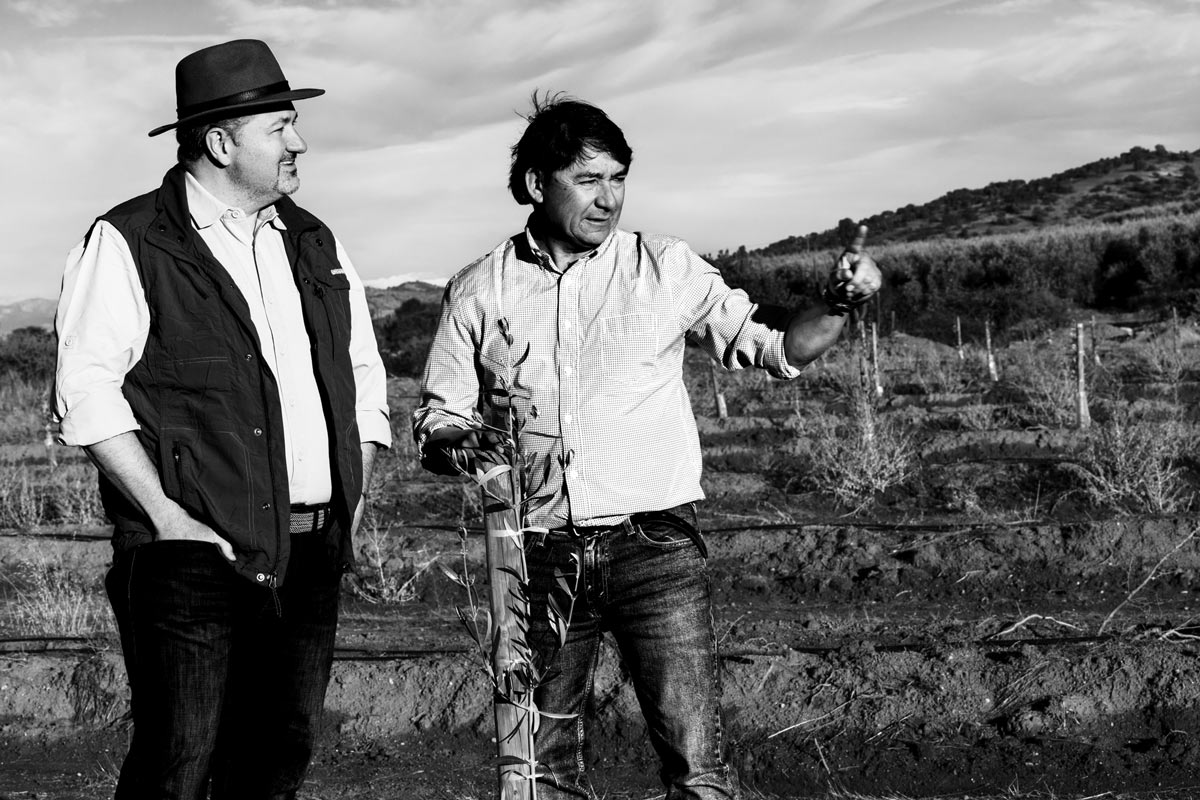
Ever elusive, the “magic window” I chase each harvest season shrank significantly. (“Magic window” is my euphemism for the optimal moment to pick and mill the olives.) I wasn’t sure when to book my travel. As it turned out, my timing was perfect! Though under the threat of frost, my Merry Band of Tasters and I blended and secured for you these stunning and complex olive oils. Thank you, El Agrónomo, and the rest of the incomparable team at Agricola Pobeña! We will think of you as we splash this magnificently fresh oil on summer produce!
Never content to rest on his laurels (or anywhere else, for that matter), Juan Carlos is already looking ahead, eager to plant new tree stock, oversee the digging of new and deeper wells, begin pruning for robust tree health, and start renovations on select tracts of the groves. Always in the back of his mind are the motivating words, “Show me the fruit!”
Impressions and Recommended Food Pairings
This complex blend of Italian varietals has a Southern Hemisphere personality! On the nose, our tasters perceived almond, green apple, artichoke, Tuscan kale, black pepper, and chopped culinary herbs—rosemary, thyme, and oregano. On the palate, we noted the pleasant nuttiness of green almond and hazelnut together with fennel, sage and wild oregano, chicory and microgreens, the bitterness of arugula, and the spiciness of black pepper.
Splash this dazzling oil on pizza; tomato-based pasta dishes; cold orzo, couscous, and whole grains; caprese salad, fennel, oranges and black olives, and salads with nuts; and crudité and charcuterie platters. It will enhance beef, lamb, and duck; quinoa and black bean burgers* and other legume dishes; smashed potato canapes with smoked salmon; crusty breads and focaccia; and chiffon cake batters.
This Quarter’s Third Selection
- Producer: Alonso, Agricola Pobeña, Comuna de La Estrella, O’Higgins Region, Chile 2024
- Olive Varieties: Picual, Koroneiki
- Flavor Profile: Bold
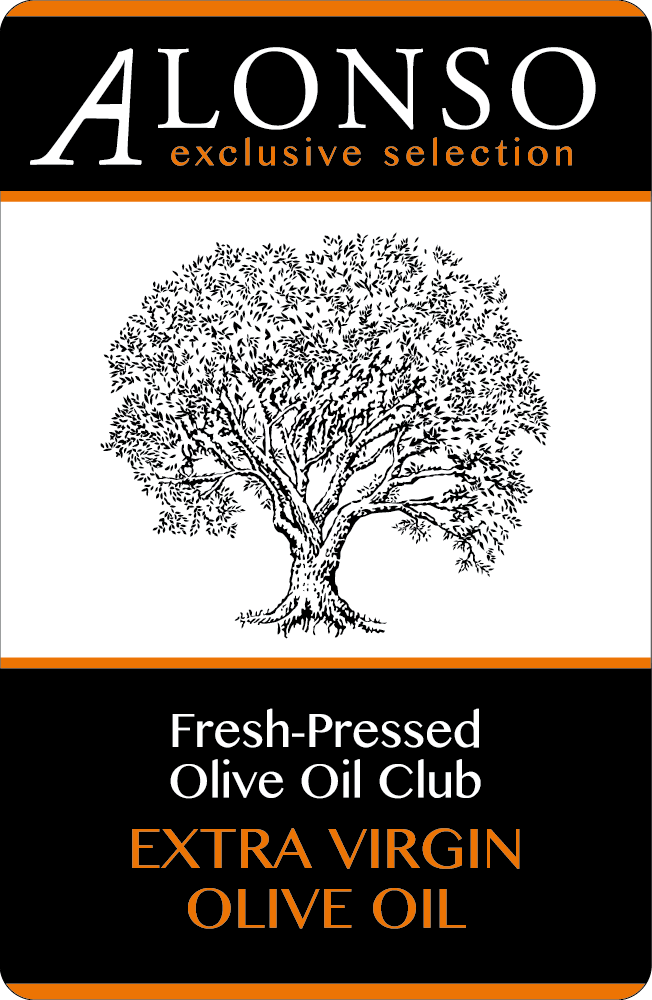
My Merry Band of Tasters and I always enjoy time spent with Juanjo Alonso, who oversees the family’s extraordinary olive farm, Agricola Pobeña. Juanjo’s positive energy, zest for life, and passion for producing olive oils of the highest quality make him very fun (and inspiring) to be around.
Many Club members may remember how the Alonso family came to be one of Chile’s top olive oil producers: Abel Alonso, the patriarch of the clan, arrived in Chile as a refugee from Spain’s Basque country. He became a successful entrepreneur in his adopted country but retained strong ties to his homeland. Nearing retirement, the father of five dreamed of establishing an olive grove and mill that produced world-class extra virgin olive oils, a legacy for his children and their progeny. But where to start?
Cue Juanjo, who was completing an advanced degree in fine arts and polishing his surfing skills off the California coast. Before you could say, “Hang ten,” Juanjo was home, searching for suitable land. He found it in the fertile O’Higgins region. (Local dowsers confirmed the presence of water, a non-negotiable condition of the sale.)
You might wonder why a young man would sacrifice his own plans for his father’s vision. Loyalty to home, a concept known as exte, is important in the Basque culture. Juanjo and his siblings wanted to make Abel’s dream a reality, come hell or high water. Both arrived this year.
It was a nightmarish scene when wildfires struck the region the first week in February— just after my January visit. (The fires were not unexpected, given the Chilean summer’s blistering hot temperatures and the air’s low humidity.) Juanjo and his team had three hours to prepare for the conflagration. Just after 8:30 p.m., the wind-driven flames reached the farm. Armed with shovels and flanked by tractors towing tanks of water, the men fought the fire all night long and into the next day, building firewalls and frantically beating out errant embers—easy to see in the dark, Juanjo said. Deliriously tired, one of Juanjo’s men (“Jimmy”) mindlessly parked his truck just a few feet from the leading edge of the fire. Alarmed, Juanjo insisted Jimmy get a few hours of rest before returning. “You’re a hero,” Juanjo told him. “You saved the farm!”
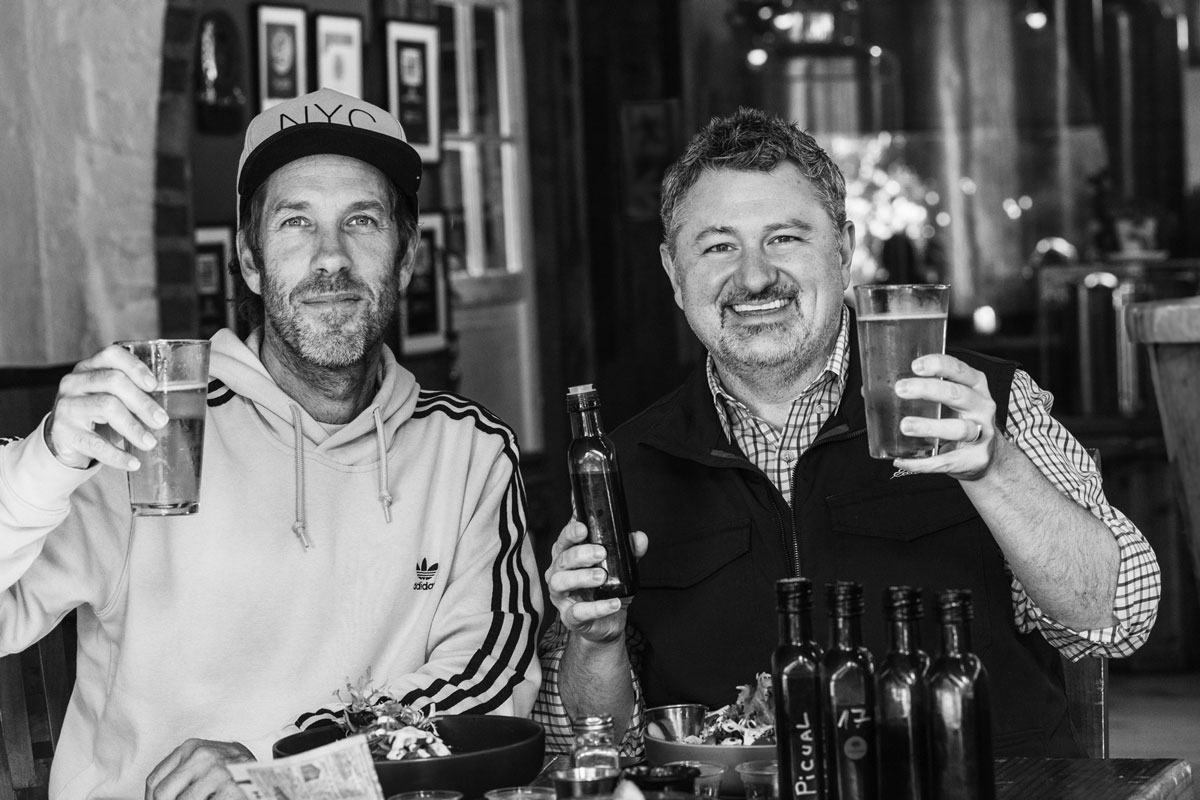
While much of the 1,100-acre property was at risk, including valuable 10- to 12-year-old trees, the fire damage was happily restricted to less than 20 acres. At some point on the second day, the flames leapfrogged over the groves. Juanjo then dispatched his team to save local houses.
Always the optimist, Juanjo expects winter rains, like the drought-busting ones that fell on Central Chile this past season, will quickly rejuvenate the scorched trees. The rainfall-dependent farm also needs to replenish its 55-acre lake (see the photo above) and two reservoirs. In the meantime, the family is digging more wells in the bedrock to ensure their precious olive trees have enough water for years to come. The Alonso family is definitely playing the long game.
Juanjo and I discussed this during my last visit to the Pobeña farm. He noted the opportunities for greater profits, now that a global shortage of olive oil has doubled or tripled its prices and producers in his country are being courted by a handful of bulk buyers in Spain and Italy. “The bad guys came to Chile,” he said ominously, meaning that the focus continues to shift from quality to quantity. The Alonso family will continue its unwavering commitment to premium olive oils and valued customers by reinvesting profits, he assured me.
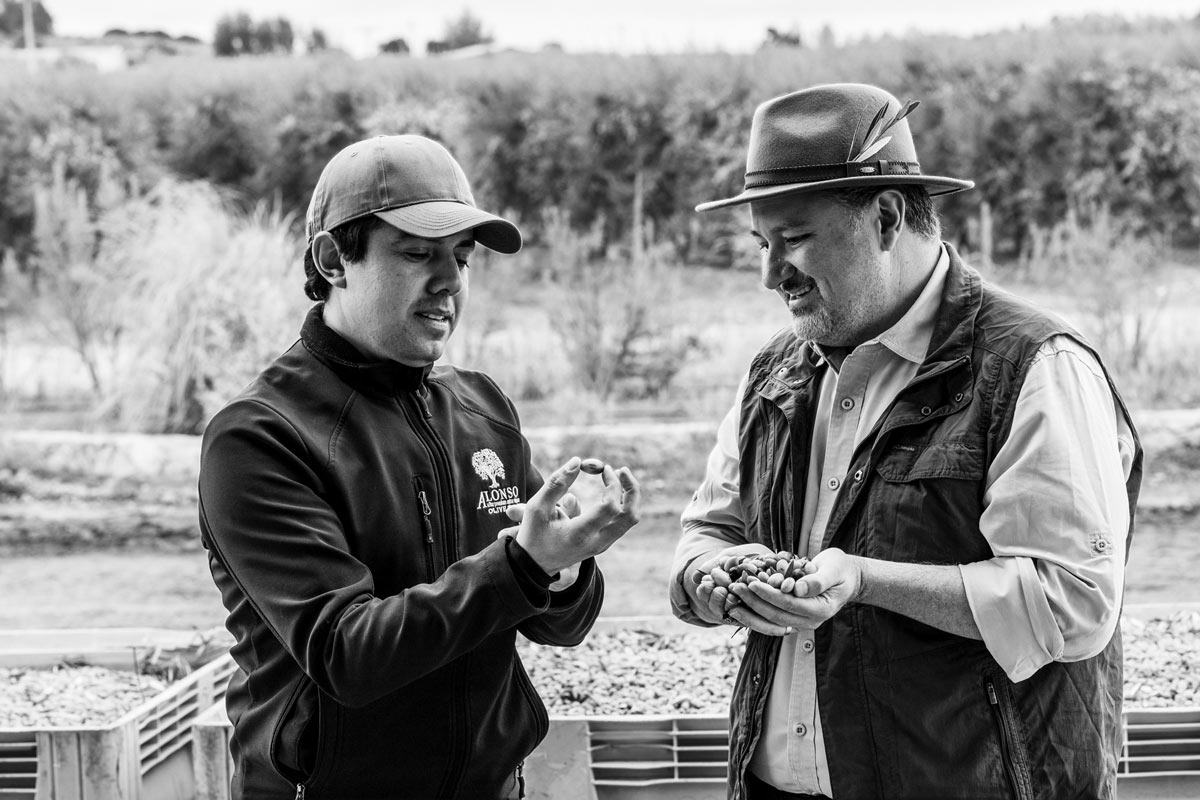
From the very beginning, he said, his father insisted on investing in the best. An example? Juanjo shared the story of his 2009 visit to Italy to check out milling equipment, something he admits he knew nothing about at the time. (An advantage, as it turns out.) But he was most impressed by the oils milled with machinery from Alfa Laval, a high-end Swedish manufacturer. On the trip home, he pondered how to sell this option to his father. (“Because I wasn’t the owner of the money!” Juanjo joked.) But, after asking a few pointed questions, Abel endorsed the purchase—a great one, in hindsight, as the equipment has been issuing award-winning oils for many years. You’re about to taste one of them!
Now approaching 90, Abel (who still visits the farm occasionally) and the rest of the family are extremely proud to know their finest oils are reaching discerning palates like yours, dear Club member. I’m thrilled with this intriguing blend, and can’t wait for you to try it!
Impressions and Recommended Food Pairings
This vibrant, early-harvest Picual, complemented by a splash of Koroneiki, is a robust expression of these varietals. Its intense, intoxicating aroma is redolent of tomato leaf, celery, wheatgrass, baby spinach, kiwi, pear, parsley, basil, and wild mint. Sense the healthful polyphenols dancing on your palate. This olive oil is rich with notes of celery, kale, rosemary, and walnuts; the bitterness of radicchio and lime zest; the fruitiness of green apple and pear; and the spiciness of Sichuan peppercorns and ginger root…with a long and persistent finish.
It’s perfect with panzanella and other tomato-based salads and sauces; flank steak with avocado chimichurri* and other grilled beef; grilled leg of lamb basted with salt water; tuna, salmon, and octopus; mushrooms, grilled radicchio, and green beans; wild rice; and chocolate-based desserts like mousse and brownies.
*See the recipe section for bolded dishes.
Olive Oil and Health
Reference: Tessier A-J, Cortese M, Yuan C, et al. Consumption of olive oil and dietary quality and risk of dementia-related death. JAMA Network Open. 2024;7(5):e2410021. doi:10.1001/jamanetworkopen.2024.10021.
A recently published analysis of two large, long-term studies found that consuming half a tablespoon or more of olive oil per day lowered the risk of dying of dementia by up to 34% in both women and men. The protective effect of olive oil consumption was even greater in women.
More than 92,000 participants from the Nurses’ Health Study (NHS) and the Health Professionals Follow-Up Study (HPFS) were included in this analysis. The NHS started in 1976 and enrolled 121,700 female registered nurses (ages 30–55). The HPFS began in 1986 as a similar study in men, enrolling 51,525 male healthcare professionals (ages 40–75).
Study participants responded every other year to detailed food frequency questionnaires (FFQ) about their consumption of specific foods. Questions about olive oil were added in 1990. Total olive oil intake was determined by three responses: olive oil used for salad dressings, olive oil added to food or bread, and olive oil used for baking or frying at home.
Olive oil intake frequency was categorized as follows:
• Never, or less than once per month
• Less than 4.5 grams (about one teaspoon) per day
• Between 4.5 and 7 grams per day
• More than 7 grams (about half a tablespoon) per day
About two-thirds of the study participants (65.6%) were women, about a third (34.4%) were men, and the average age at the start of the study was 56 years. Each participant’s FFQs from 1990 to 2014 (or for as long as the participant remained in the study) were totaled and averaged. Average olive oil intake was 1.3 grams per day in both studies.
Participants in the highest olive oil intake group—half a tablespoon or more of olive oil per day— reduced their risk of dying of dementia by 28% to 34%, compared to study participants who never or very rarely consumed olive oil. These results were regardless of other dietary habits and factored in socio-demographic and lifestyle differences.
Deaths due to dementia were confirmed by physician’s review of medical records, autopsy reports, or death certificates of study participants.
It has been proposed that consuming olive oil may lower the risk of dementia-related death by improving blood vessel health, yet the results of this analysis were not impacted by hypertension or high cholesterol in participants.
Limitations of this analysis include its predominantly non-Hispanic white population of healthcare professionals, which reduces the ability to generalize these results across more diverse populations. Also, the FFQs did not dis-tinguish among types of olive oil, which differ in their amounts of polyphenols and other bioactive compounds.
Kudos from Club Members

Recipes
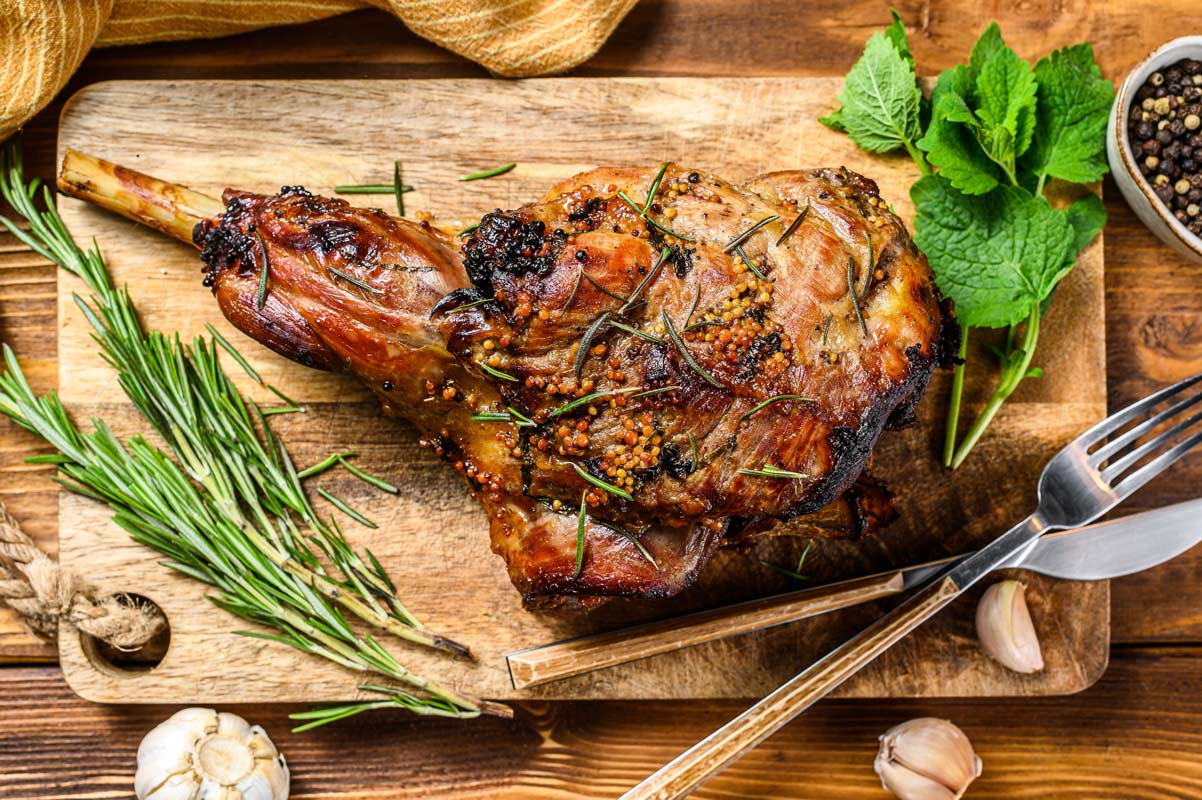 Cordero al Asador with Herbed Salmuera (Grilled Leg of Lamb Basted with Salt Water) South Americans usually take a simple approach to their meats. This salt- and herb-based liquid, called salmuera (the precursor to chimichurri), was used by gauchos, the nomadic cowboys of South America, to baste proteins when cooking over live fire. Ingredients 1 1/2 cups water 2 tablespoons coarse salt (kosher or sea) 1 1/2 teaspoons freshly… view recipe
Cordero al Asador with Herbed Salmuera (Grilled Leg of Lamb Basted with Salt Water) South Americans usually take a simple approach to their meats. This salt- and herb-based liquid, called salmuera (the precursor to chimichurri), was used by gauchos, the nomadic cowboys of South America, to baste proteins when cooking over live fire. Ingredients 1 1/2 cups water 2 tablespoons coarse salt (kosher or sea) 1 1/2 teaspoons freshly… view recipe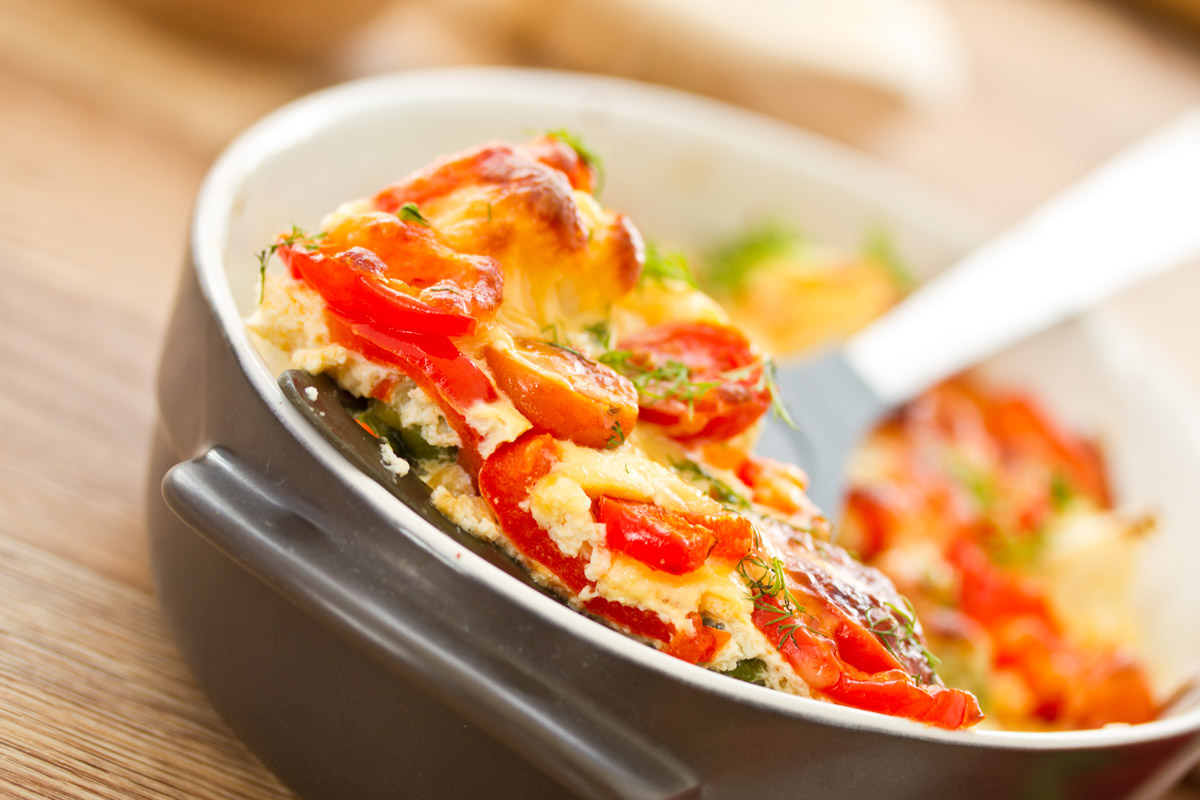 Eggs with Basquois Piperade Piperade, a vegetable stew–like concoction popular in Basque country (which straddles northern Spain and southern France) is similar to Sicilian caponata or Middle Eastern shakshuka. This version is from the Alonso family, whose patriarch is Basque, though he has lived in Chile for many years. Instead of scrambling the eggs, you can break them right… view recipe
Eggs with Basquois Piperade Piperade, a vegetable stew–like concoction popular in Basque country (which straddles northern Spain and southern France) is similar to Sicilian caponata or Middle Eastern shakshuka. This version is from the Alonso family, whose patriarch is Basque, though he has lived in Chile for many years. Instead of scrambling the eggs, you can break them right… view recipe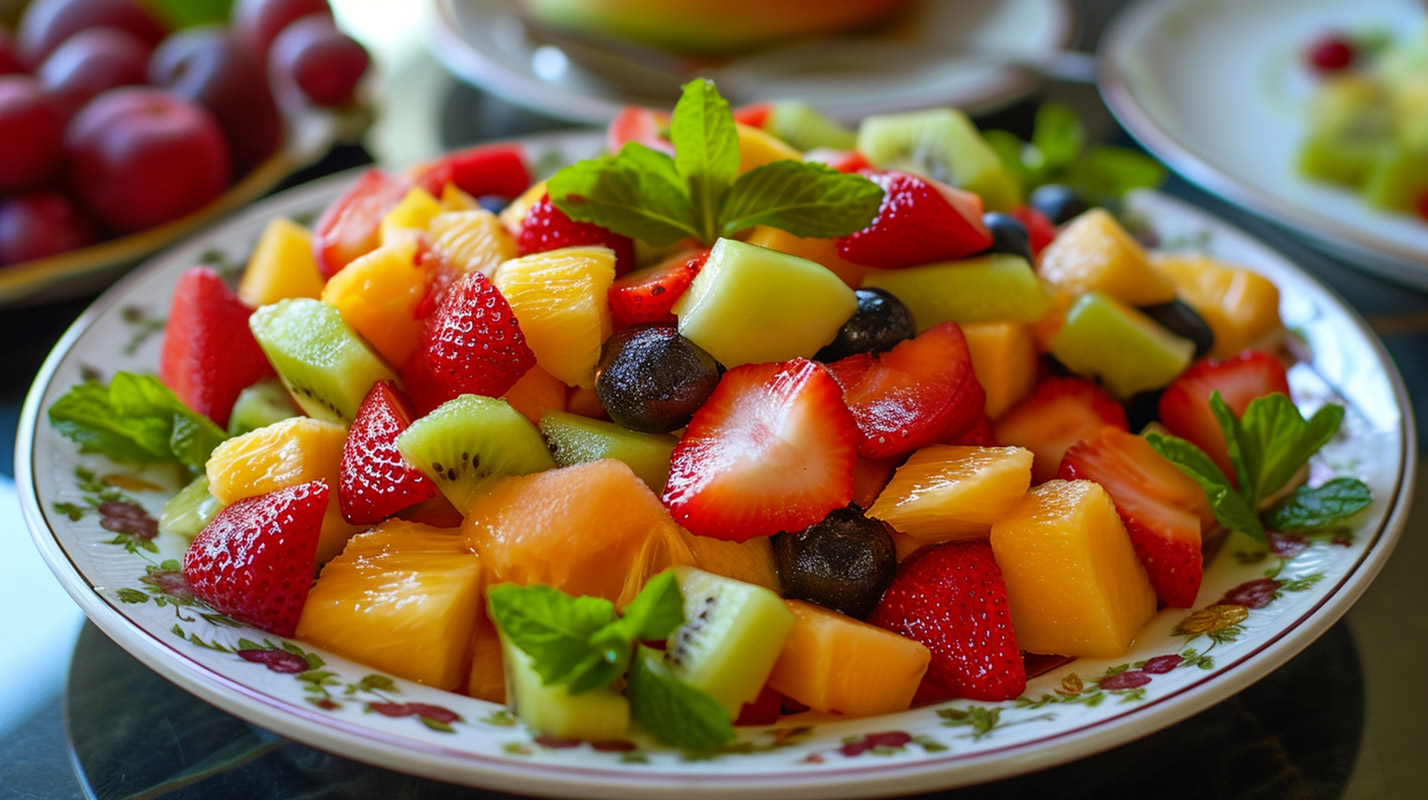 Brunch Fruit Salad with Honey-Lime-Mint Vinaigrette For a bright brunch dish, serve the dressed fruit salad over thick Greek yogurt or Icelandic skyr. Ingredients 4 cups mixed fruit, such as chunks of melon and mango, sliced strawberries, red grapes, blueberries, and pineapple cubes 3 tablespoons extra virgin olive oil 2 tablespoons honey, preferably orange blossom Zest and juice of 1 medium lime … view recipe
Brunch Fruit Salad with Honey-Lime-Mint Vinaigrette For a bright brunch dish, serve the dressed fruit salad over thick Greek yogurt or Icelandic skyr. Ingredients 4 cups mixed fruit, such as chunks of melon and mango, sliced strawberries, red grapes, blueberries, and pineapple cubes 3 tablespoons extra virgin olive oil 2 tablespoons honey, preferably orange blossom Zest and juice of 1 medium lime … view recipe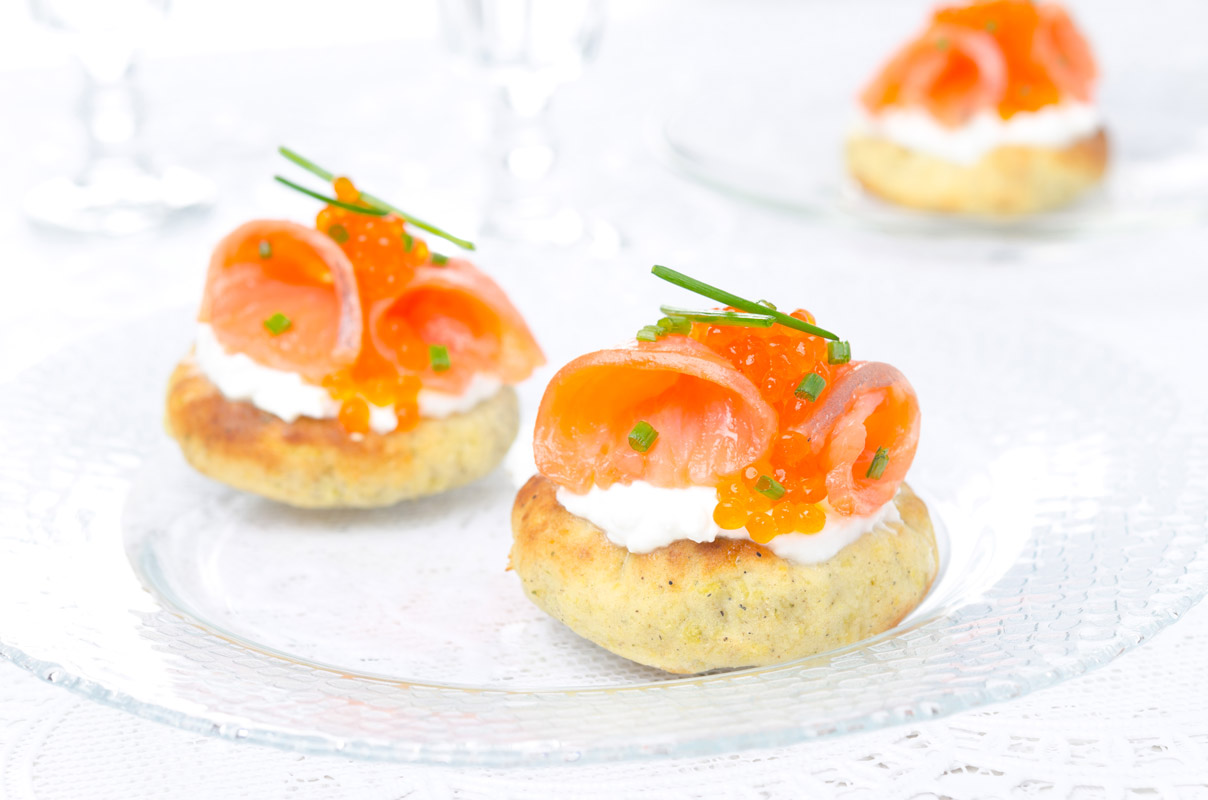 Smashed Potato Canapes with Smoked Salmon We’ve all eaten smoked salmon on bagels or toast points, but for something different, try this delicacy on crispy smashed potatoes. In place of smoked salmon, use salmon roe or another domestic caviar. Elegant! Ingredients For the potatoes: 12 small Yukon gold potatoes, each about 1 1/2 to 2 inches in diameter Extra virgin olive… view recipe
Smashed Potato Canapes with Smoked Salmon We’ve all eaten smoked salmon on bagels or toast points, but for something different, try this delicacy on crispy smashed potatoes. In place of smoked salmon, use salmon roe or another domestic caviar. Elegant! Ingredients For the potatoes: 12 small Yukon gold potatoes, each about 1 1/2 to 2 inches in diameter Extra virgin olive… view recipe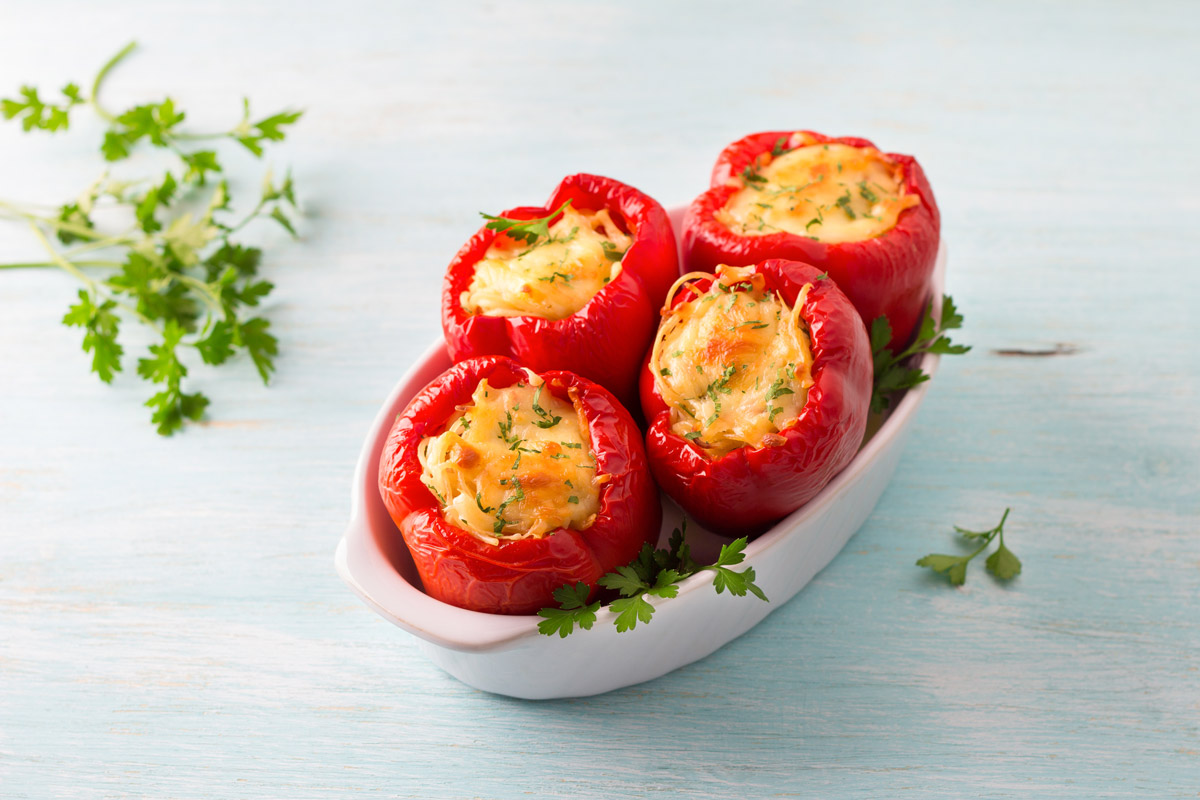 Bell Pepper “Empanadas” This take on empanadas de queso is perfect when you want melted cheesy goodness but would rather skip the dough. Preferred in Chile is the very buttery queso chanco, a cheese that’s close in taste and texture to our Muenster. Though not traditional in empanadas, merquén adds a nice zest (you can substitute pimentón if it’s… view recipe
Bell Pepper “Empanadas” This take on empanadas de queso is perfect when you want melted cheesy goodness but would rather skip the dough. Preferred in Chile is the very buttery queso chanco, a cheese that’s close in taste and texture to our Muenster. Though not traditional in empanadas, merquén adds a nice zest (you can substitute pimentón if it’s… view recipe Sweet Corn Gazpacho with Avocado Crema This unusual twist on gazpacho takes advantage of tender sweet corn at its peak. As you’ll see from the recipe, we’re emphasizing corn’s gorgeous yellow color. When buying, look for ears with fresh stems (like cut flowers)—not brown or dessicated. Like flowers, you can recut the ends and store the ears upright in sugared water… view recipe
Sweet Corn Gazpacho with Avocado Crema This unusual twist on gazpacho takes advantage of tender sweet corn at its peak. As you’ll see from the recipe, we’re emphasizing corn’s gorgeous yellow color. When buying, look for ears with fresh stems (like cut flowers)—not brown or dessicated. Like flowers, you can recut the ends and store the ears upright in sugared water… view recipe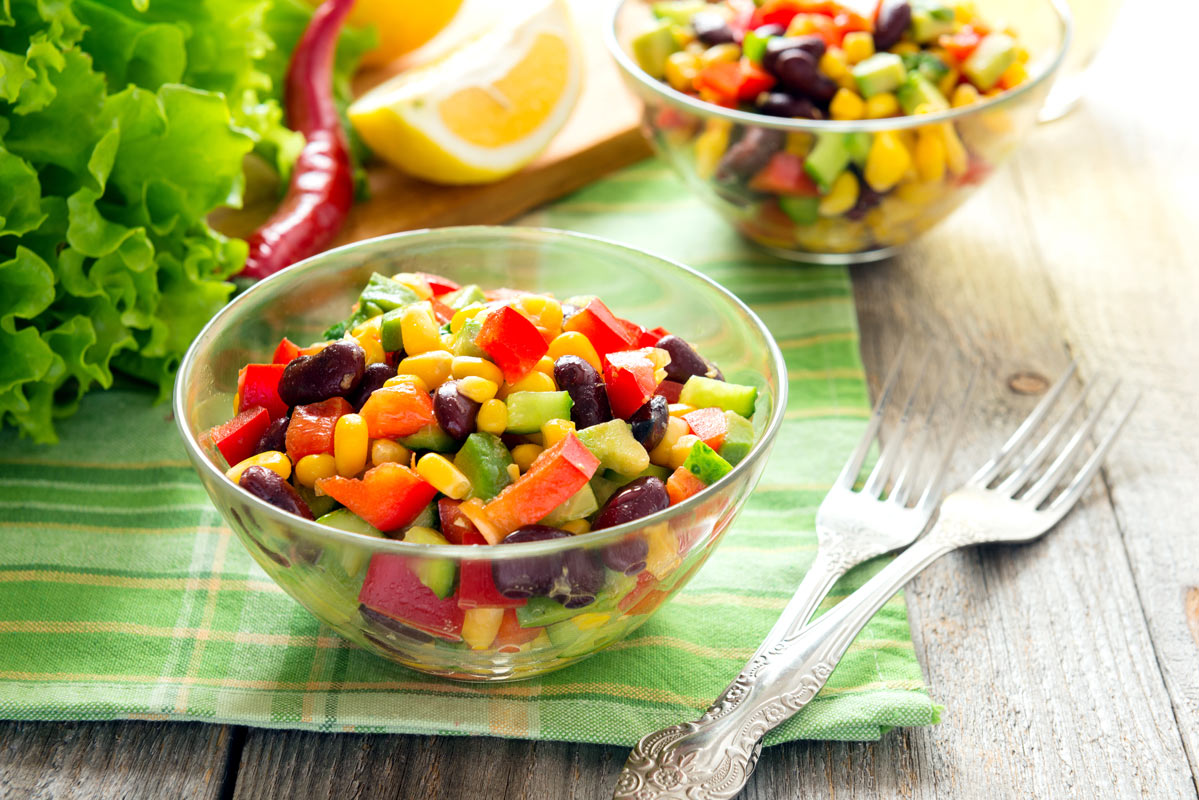 Ceviche de Porotos Negros (Black Bean Ceviche) I enjoyed this dish at the wonderful Cervecería Rural in Litueche. It’s a salad of black beans (red kidney beans make a great alternative) dressed in the style of a ceviche marinade. Some versions have all the ingredients tossed together, but Rural’s chef presented it as a beautifully composed salad. Ingredients For the dressing: 1… view recipe
Ceviche de Porotos Negros (Black Bean Ceviche) I enjoyed this dish at the wonderful Cervecería Rural in Litueche. It’s a salad of black beans (red kidney beans make a great alternative) dressed in the style of a ceviche marinade. Some versions have all the ingredients tossed together, but Rural’s chef presented it as a beautifully composed salad. Ingredients For the dressing: 1… view recipe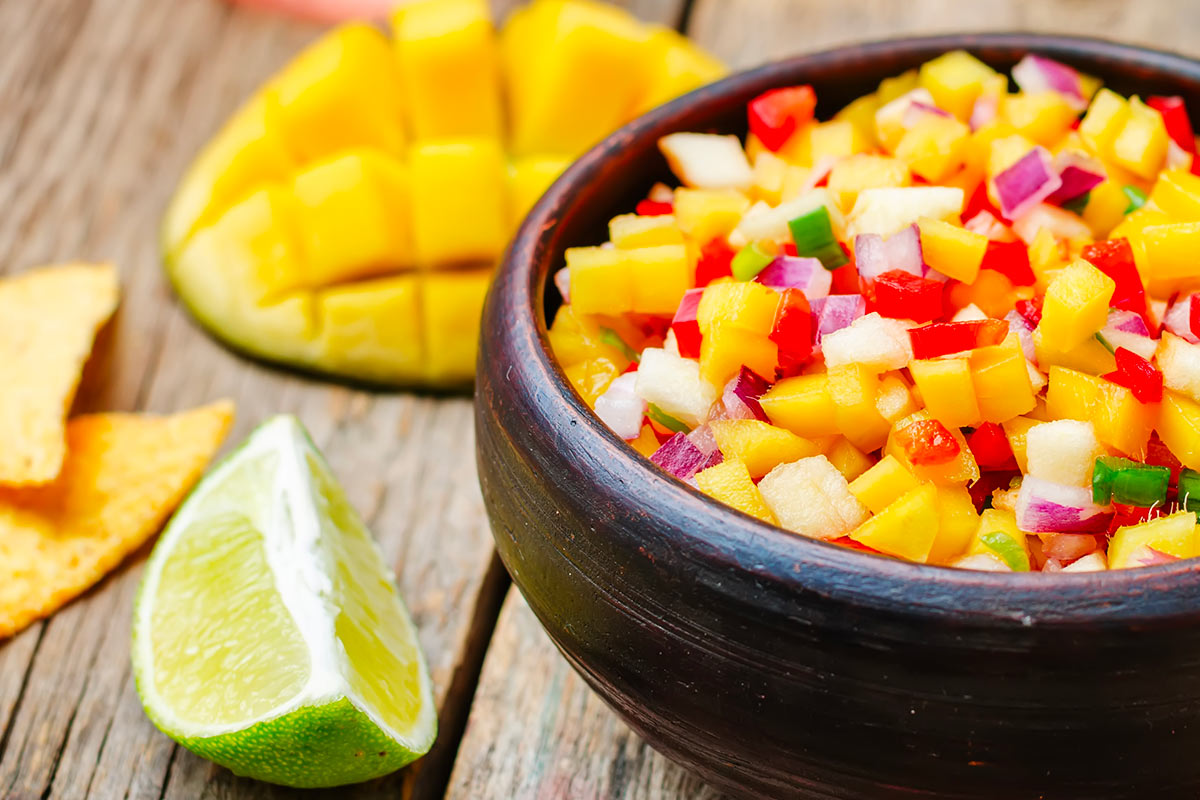 Roasted Chicken with Mango and Nut Salsa Roasted chicken is the little black dress of the table, welcome on the menu of a dinner party or a weeknight meal. The following bright-tasting salsa is also terrific with fish, a popular entrée in Chile, a country with over 2,000 miles of Pacific coastline. Dice the vegetables extra fine and serve the salsa with… view recipe
Roasted Chicken with Mango and Nut Salsa Roasted chicken is the little black dress of the table, welcome on the menu of a dinner party or a weeknight meal. The following bright-tasting salsa is also terrific with fish, a popular entrée in Chile, a country with over 2,000 miles of Pacific coastline. Dice the vegetables extra fine and serve the salsa with… view recipe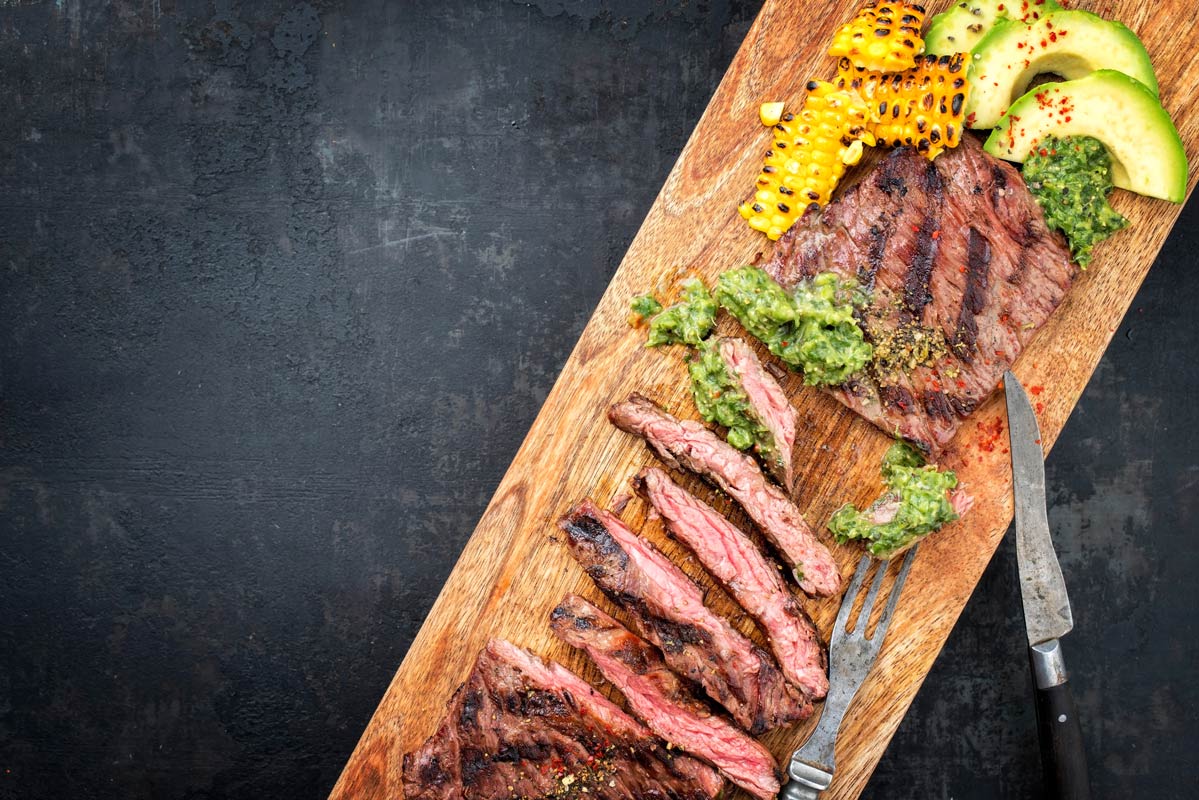 Flank Steak with Avocado Chimichurri To make this lean cut of beef tender, three steps are needed: a long marination, a fast grilling, and slicing against the grain—in the opposite direction of its meat fibers. Ingredients For the steak: 2 tablespoons extra virgin olive oil 2 tablespoons red wine vinegar 1/2 teaspoon coarse salt (kosher or sea) 1/2 teaspoon freshly… view recipe
Flank Steak with Avocado Chimichurri To make this lean cut of beef tender, three steps are needed: a long marination, a fast grilling, and slicing against the grain—in the opposite direction of its meat fibers. Ingredients For the steak: 2 tablespoons extra virgin olive oil 2 tablespoons red wine vinegar 1/2 teaspoon coarse salt (kosher or sea) 1/2 teaspoon freshly… view recipe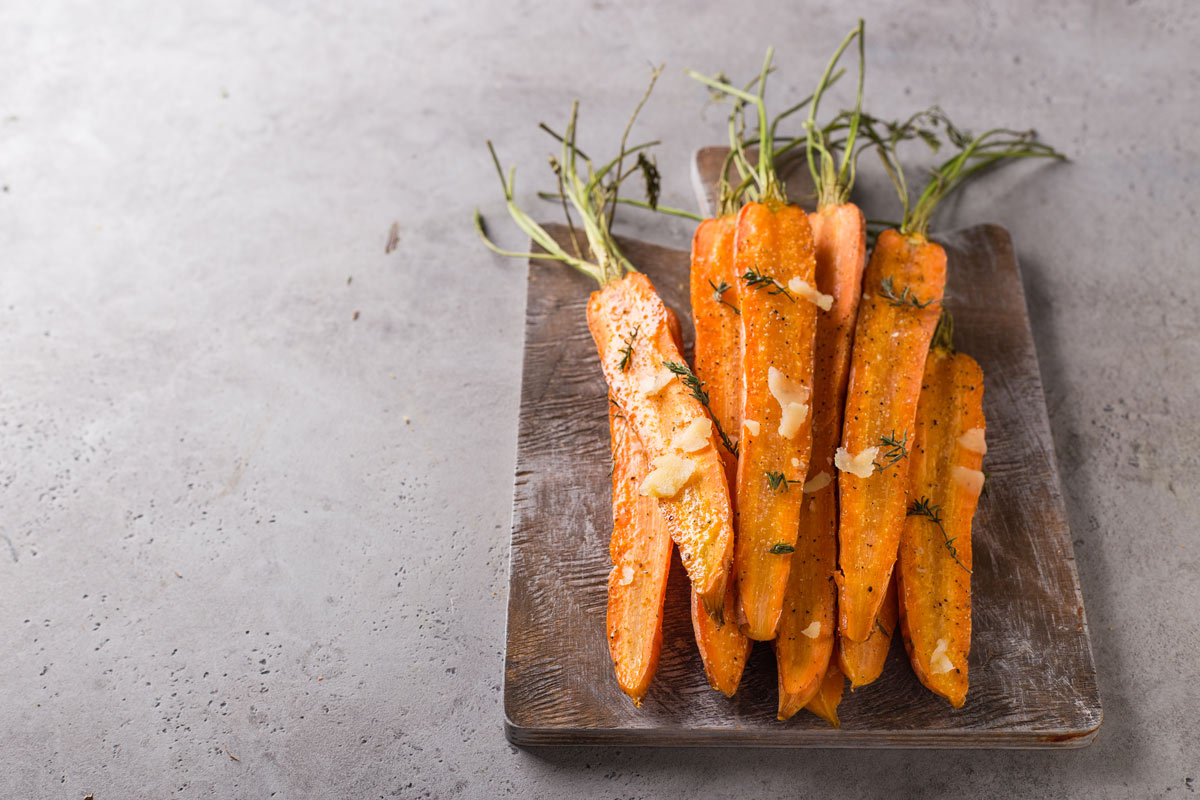 Roasted Parmesean Carrots This might be my new favorite way to eat carrots, which, like most vegetables, grow huge in Central Chile’s fertile soil. Marinated in olive oil and spices, then coated in freshly grated Parmesan cheese, the carrots are roasted until tender. They’re great with chicken, pork, or lamb. Ingredients 8 large carrots, peeled and trimmed 3… view recipe
Roasted Parmesean Carrots This might be my new favorite way to eat carrots, which, like most vegetables, grow huge in Central Chile’s fertile soil. Marinated in olive oil and spices, then coated in freshly grated Parmesan cheese, the carrots are roasted until tender. They’re great with chicken, pork, or lamb. Ingredients 8 large carrots, peeled and trimmed 3… view recipe
